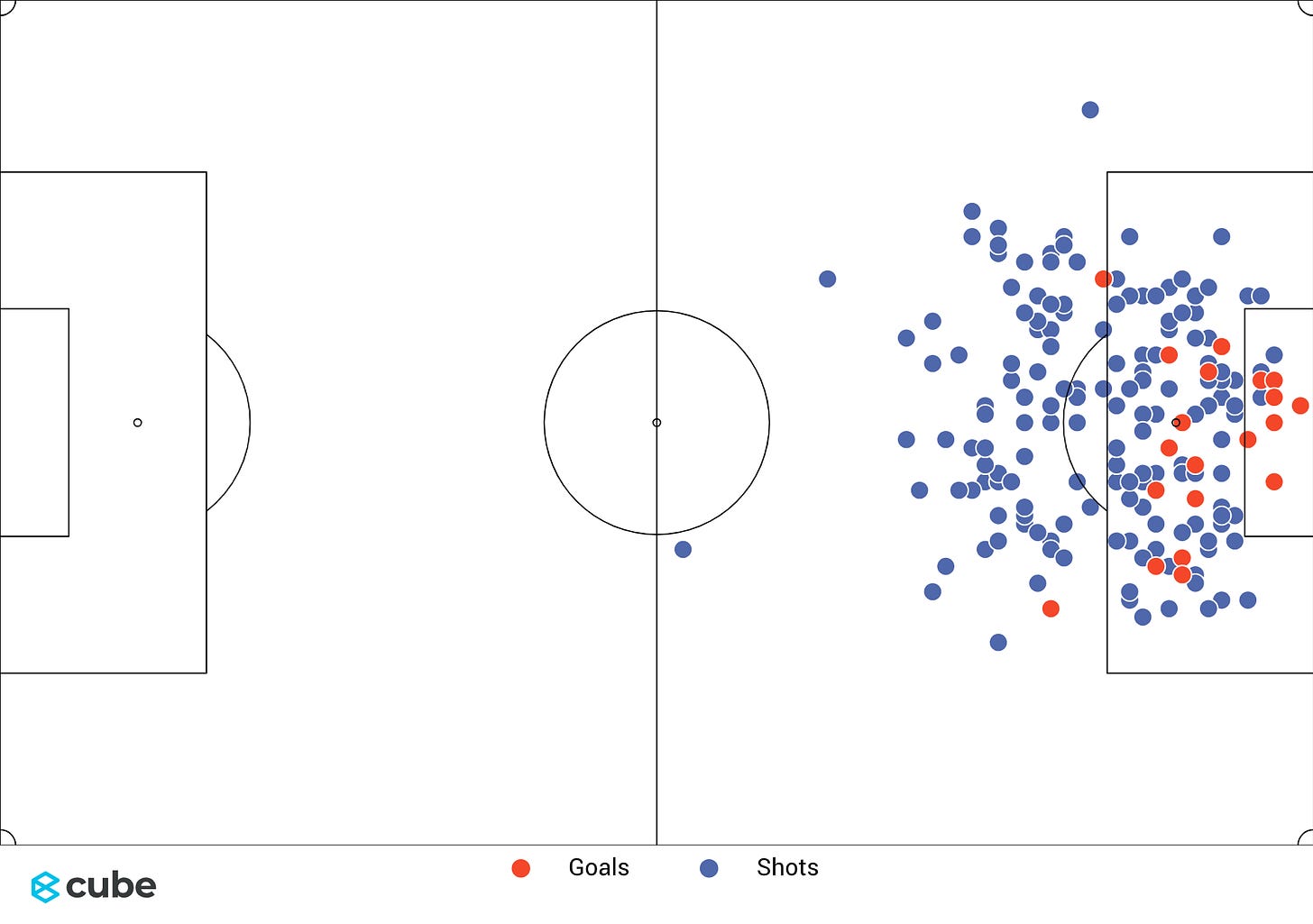How has Arne Slot changed Liverpool?
The Dutchman regularly insists he did not have to change much after succeeding Jurgen Klopp but there is already clear evidence of his style taking hold.
This piece is adapted from an analysis originally published to YouTube. To watch it, click here, or scroll down to the embedded video.
If you were to ask Arne Slot, he would likely tell you that he hasn’t had to change very much at Liverpool since taking on the role of head coach over the summer.
The Dutchman certainly inherited a strong squad used to winning from Jurgen Klopp, and the ease with which they have sustained their good performance suggests a light-touch approach has been taken.
But the truth is that there have been many tweaks made by Slot, ones which have been crucial to a fine start to the season that sees the Reds top of both the Premier League and Champions League.
He may be going about it quietly, but the new Liverpool manager is rebuilding this team in his image, and with great success if recent results are anything to go by.
Change of shape
Take, for example, the minor adjustment to formation indicated by the graphics below.
Last season’s passing network shows quite clearly that Liverpool were strongly wedded to the 4-3-3 shape that was Klopp’s calling card.
However, this term, they have shifted to a 4-2-3-1 formation despite Slot’s insistence in one of his early press conferences that this would not be the case.
Note also the positioning of Mohamed Salah which, as has been evident in every game so far this season, is wider than it typically has been under the previous manager.
Of course, not everything in terms of approach has changed, with claims the Reds might shift to a more pass-heavy style yet to bear fruit.
In Klopp’s final season, 50% of passes made were classed as short (between five and 15 yards), 43% medium (between 15 and 30 yards) and 7% long (over 30 yards).
So far under Slot, the breakdown is an eerily similar 49%, 43% and 8% respectively.
Defensive tweaks
If there is one area that has shown clear improvement thus far, it is Liverpool’s defensive performance.
They have conceded just six goals in 11 games, putting them on track for 20 across a whole season, which would be the third best record in Premier League history behind 2004-05 Chelsea (15) and 1998-99 Arsenal (17).
And that is down to their xGA per 90 dropping from 1.2 last season to just 0.85 so far this time around.
The reason for this is a far more passive defensive style indicated by the wagon wheels below, which show Liverpool having dropped off significantly in terms of high press and aggression.
This is also backed up by the fact the Reds have gone from third in the Premier League for final third tackles per 90 last term (with 2.97) to 14th this time around (2.36).
See also the ball recoveries for last season, which illustrate how often Klopp’s team won the ball all across the pitch.
Meanwhile, under Slot, the majority of the recoveries so have come inside the centre of the box or just in front of it after Liverpool have got back into shape.
Still a counterattacking force
In terms of the attack, a glimpse at the wagon wheels covering last season and this is fairly instructive, with perhaps the first thing that jumps out the fact that counterattacks are - rather surprisingly - up.
This was supposed to be a Klopp trademark but is a quality that, as seen most recently against Aston Villa, Slot is happy to continue relying on.
It is also interesting that Liverpool are crossing less, creating fewer chances, and attacking less either centrally or down the flanks, suggesting they are less potent going forward.
However, they have jumped up 13 percentiles in terms of finishing, while the final third threat remains similar - so how is this possible?
A look at the Reds’ 196 shots taken across the first 11 games of last season is helpful in explaining, giving a good idea of how the attack previously functioned under Klopp.
Now compare that to this season, where you can see there are only 153 shots but far fewer speculative efforts from distance.
That is supported by the shot distance dropping from 17.2 yards (sixth highest in the Premier League) last term to 16 yards (12th) this time around.
Clearly, Slot is keen on his team taking fewer but higher quality shots than his predecessor and, thus far, there has been no drop-off in output as a result.
Last term, Liverpool finished as third highest scorers in the division and they are in the same position so far this year, just two goals shy of top-scorers Tottenham.
What comes next?
So clearly, despite his claims to the contrary, there have already been some big changes under Slot, with his squad defending deeper and more solidly while being pickier about their shots since his arrival.
But it is also fair to describe Liverpool as a work in progress whose high press and patience in attack the new manager will doubtless aim to improve over time.
Still, it is encouraging that Slot has been able to make such significant tweaks already, not least because they all seem to be working in making his team harder to beat.














Insightful analysis, David. Using stats to lift the "layers of the onion" to discover the subtle, but impactful tweaks is always an interesting exercise. There are dimensions to Slot's tactical philosophies that are only now coming into better focus.